Infectious cat diseases

INFECTIOUS DISEASES
Feline Leukemia Virus (FeLV)
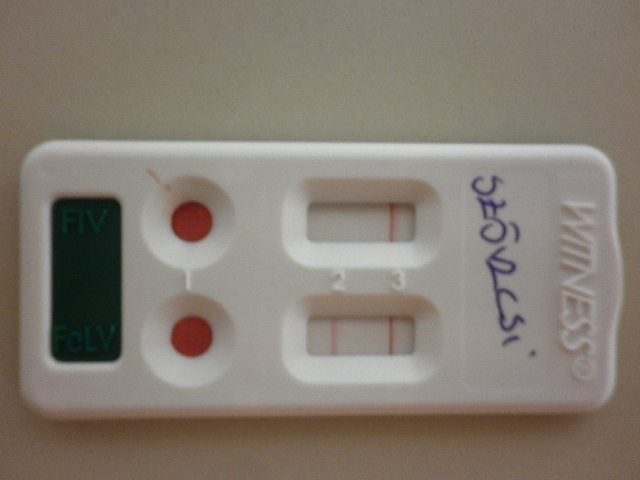
Introduction:
Feline Leukemia Virus (FeLV) is one of the most dangerous diseases in cats. It is triggered by an oncogene retrovirus, which may cause cancer of the white blood cells. The disease is spread by direct contact with infected saliva, nasal secretions, and blood. It is common for cats to be infected during street fights or mating, but unfortunately the infection can also be passed through the uterus meaning kittens can be born with the disease. Although they say that cats have seven lives, there are still viral diseases that we cannot cure. However, at least there is a vaccine against feline viral leukemia!
Symptoms:
The incubation period of FeLV varies greatly and can lurk in the body for a long time without visible symptoms. When the body is weakened due to a minor illness virus replication starts, causing a fever. Due to the overgrowth of white blood cells in the bone marrow, red blood cell formation has increasingly less space, so the progression of anemia, pale mucous membranes, weakness, fatigue, loss of appetite, and a decrease in oxygen supply with dyspnea are often seen. The proliferation of white blood cells can affect many organs, so the symptoms are varied. Because of this rampant overgrowth of leukocytes, enlargement of the lymph nodes throughout the body (e.g. under the chin, back of the hind legs) is common.
Spleen and liver enlargement may cause a distended abdomen, often in combination with emaciation. In the event of hepatic failure, jaundice may develop. The wild lymphatic system and white blood cells may also cause intestinal wall thickening, chronic diarrhea and vomiting along with the consequential fluid loss, loss of skin elasticity, third eyelid prolapses, and sunken eyes. Respiratory symptoms, such as coughing or shortness of breath, are not uncommon and are caused, not only by enlarged lymph nodes around the bronchi but, by the fever, anemia, and secondary infections of the respiratory tract.
It is also possible for kidney degeneration to occur which can cause renal failure, with increased drinking/urination, discomfort, and vomiting. The infection may also induce neurological symptoms. Finally, in pregnant cats, FeLV may cause fetal injury or miscarriage.
Diagnosis:
Feline Leukemia Virus can be diagnosed with a blood test. Due to the infectious properties of the disease (e.g. long asymptomatic latency, congenital infections), it is essential to screen cats with virus tests. Performing these tests on kittens on the streets and in shelters is of the utmost importance!
Prevention and Treatment:
The most important thing is prevention! If your cat will be in contact with other cats, it is a good idea to do a blood test and give the FeLV vaccine (after a negative test), and spay or neuter to prevent fighting.
In the case of FeLV, it is imperative to isolate the sick cat to prevent other cats from being infected, hen symptomatic treatment and immune enhancement can be used as long as the general quality of life of the animal does not deteriorate completely.
Feline Infectious Peritonitis (FIP)
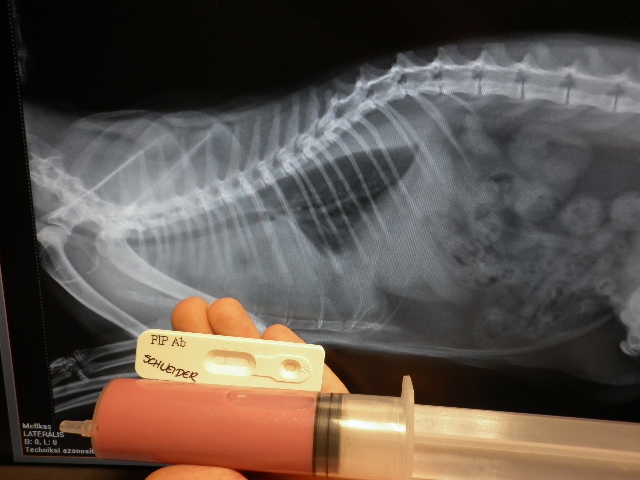
Introduction:
Feline Infectious Peritonitis (FIP) is caused by a coronavirus which infected cats carry in their intestines, however, unfortunately infection from mother to kitten is not uncommon. This is an incurable disease!
Symptoms:
The most commonly seen form of the disease is "wet" FIP, which causes fluid buildup in the abdomen and/or chest caused by abdominal and/or pleural inflammation. Typical symptoms of viral infections, such as persistent or recurrent fever, lethargy, anorexia, and anemia, often occur. It is most common to see a significantly enlarged (fluid filled) abdomen, weight loss, and abdominal pain.
Inflammatory lesions may occur on the internal organs thereby causing syndromes, often accompanied by pancreatitis and vomiting, but kidney and liver failure can also develop. In cases of pleural inflammation, dyspnea is the most common symptom. There may also be neurological symptoms and even eye problems as well. There is also a "dry" form of this disease in which there is no fluid accumulation in the body cavities.
Diagnosis:
Many additional studies are often needed, along with the symptoms and a physical examination, for accurate diagnosis. The accumulation of fluid in the body cavities can be detected by X-ray and abdominal ultrasound examination. The pathogen itself can be detected by blood tests or by testing a sample of the excess fluid.
Prevention and Treatment:
Prevention is of the utmost importance, as we often cannot symptomatically treat infected animals. Fortunately, there is a nasal vaccine against the disease, which is recommended to be given to all cats who come into contact with other cats. It is therefore also recommended that outdoor cats be castrated to lessen the possibility of infection.
Feline Immunodeficiency Virus (FIV)
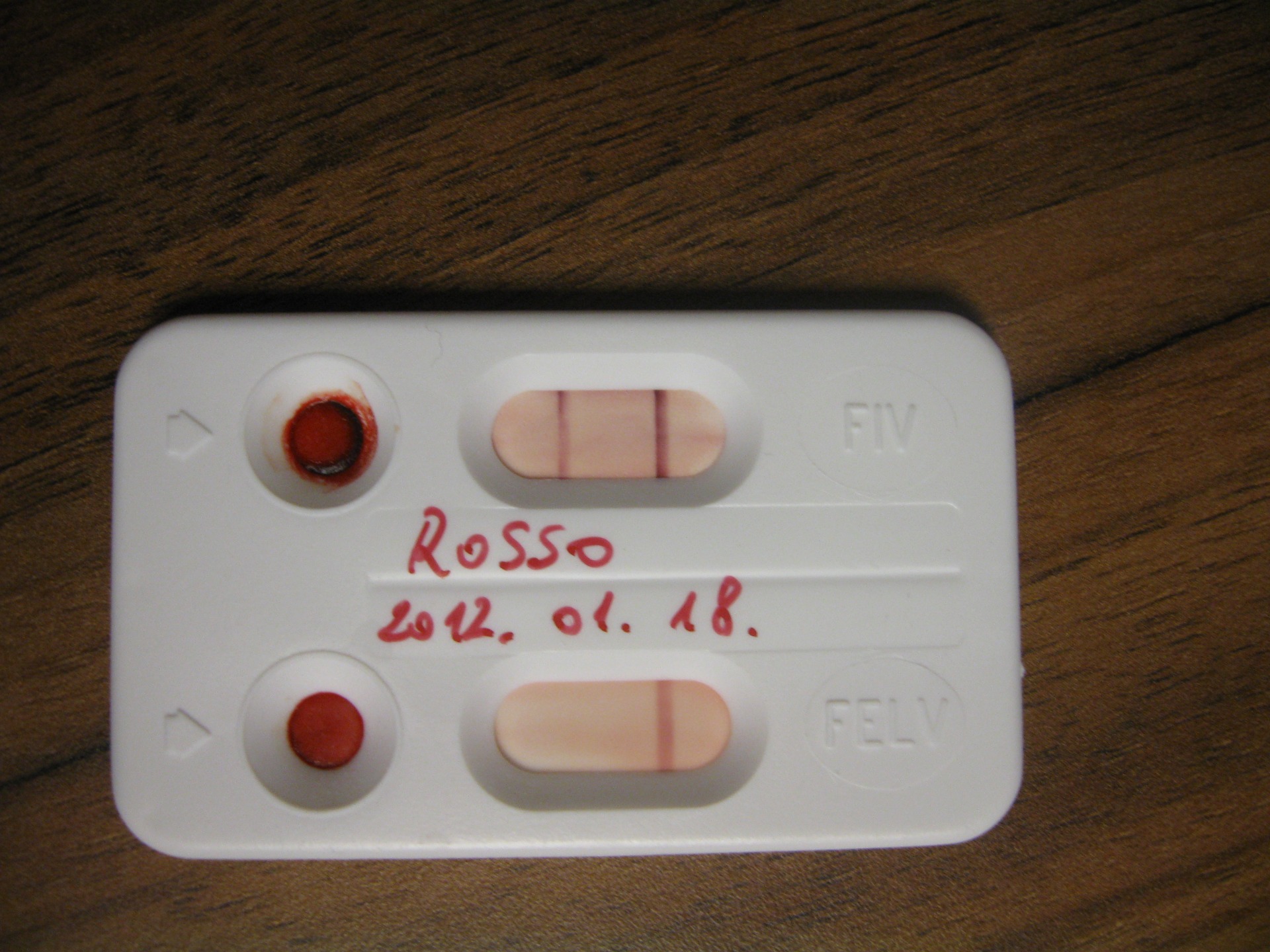
Introduction:
Feline Immunodeficiency Virus (FIV) is a very dangerous and incurable disease. It is transmitted through contact with infected bodily fluids. The term feline AIDS gets its name from the human immunodeficiency virus (HIV) which has similar symptoms, however FIV is only dangerous to cats.
Symptoms:
The viral infection causes high fever, fatigue, loss of appetite, and weight loss. Due to the decline in overall immune defense, secondary infections develop often resulting in varied symptoms. The formation of oral ulcers is common. Similar to human HIV infection, it is also usual to develop pneumonia and skin infections. There may be some neurological symptoms.
Diagnosis:
Blood tests can clearly diagnose the disease.
Prevention and Treatment:
Unfortunately, there is no available vaccine against FIV, so one thing we can do to reduce the spread of infection is sterilize any outdoor cats or cats who regularly come into contact with others. There is only symptomatic treatment (e.g. immune-boosting products, management of secondary infections) available for FIV patients and they should always be separated from other cats after diagnosis.
Feline Rhinitis
Introduction:
Feline rhinitis is a collective term for several types of upper respiratory tract infections which have different causes. See: rhinitis caused by feline Calicivirus, feline infectious rhinotracheitis, broad chlamydiosis (although it's not viral).
Calicivirus Infection
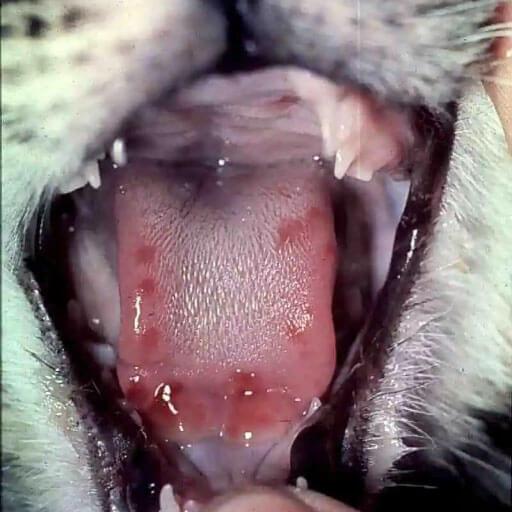
Introduction:
Calicivirus infection in felines is similar to human influenza in that it spreads rapidly and causes unpleasant symptoms.
Symptoms:
After a several day long incubation period, fever, anorexia, and upper respiratory symptoms develop. Exudative conjunctivitis is common as well as extensive oral stomatitis. Also characteristic of Calicivirus is inflammation, runny nose, sneezing and, if the infection continues and pneumonia develops, difficulty breathing and coughing.
Prevention and Treatment:
Combined vaccines include Calicivirus, so cats can be protected against it. We can only treat the illness symptomatically and, unfortunately, it is often a chronic disease.
Feline Infectious Rhinotracheitis
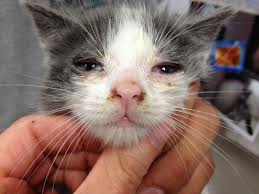
Introduction:
This is an upper respiratory illness caused by the feline herpes virus. The pathogen spreads rapidly through infected secretions. With reduced immune status, it can cause serious illness in young or elderly patients or in other diseases.
Symptoms:
After several days of incubation, fever, lethargy, and loss of appetite occur, followed by nasopharyngeal and tracheal inflammation, runny nose, sneezing, salivation, and possibly cough and dyspnoea. Frequent conjunctivitis, flushed eyes with discharge, and sometimes keratitis or clouded corneas can be seen. Bacterial infection may also be associated with viral infection, which may result in the appearance of purulent secretions. The feline herpes virus can also cause infection via the uterus, resulting in fetal death, abortion or premature kittens.
Prevention and Treatment:
Fortunately, feline herpes virus is present in combination vaccines, so we can prevent this disease. Affected cats can only be treated with symptomatic treatment (e.g. anti-viral eye drops, antibiotics for secondary infections, mucolytics), but it is possible for the illness to return or become chronic.
Chlamydia
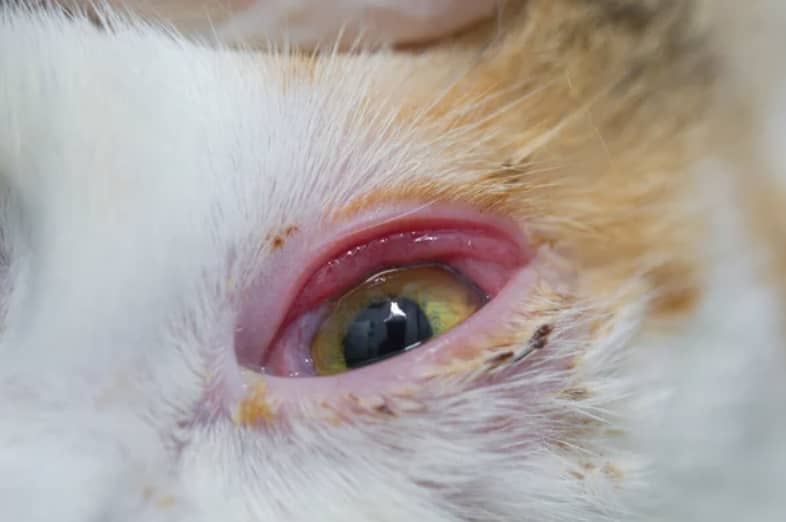
Introduction:
Chlamydiosis is zoonotic so can be dangerous for humans too. It was first detected in parrots and, therefore, is sometimes called Psittacosis or Parrot Fever. It is a common problem in cats however in dogs it is rare. The pathogen spreads from infected bodily fluids, especially eye and nasal discharge.
Symptoms:
After the incubation period conjunctivitis will develop with flushed and swollen conjunctiva, tearing and eye discharge, and excessive eye blinking. From the excess discharge it is possible to see eyelids sticking together and even third eyelid gland prolapse can sometimes be reported. In addition, rhinitis, sneezing, runny nose, cough, and secondary pneumonia may develop. Chlamydia may also cause fetal injury or even miscarriage.
Prevention and Treatment:
Chlamydia psittachi is also used in combined vaccines to protect against infection. In case of illness, symptomatic treatment (eye drops, antibiotics for secondary infections) may be used.
Feline Panleukopenia
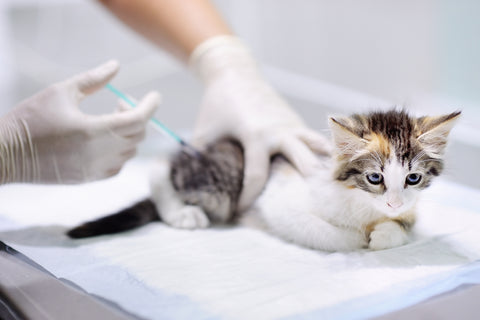
Introduction:
Parvovirus, which causes infectious intestinal inflammation, causes a severe decrease in white blood cells, and is therefore known as panleukopenia. The pathogen is transmitted in infected feces and, to a lesser extent, other bodily fluids.
Symptoms:
After a few days latency period, fever, lethargy, loss of appetite, watery (and sometimes bloody) diarrhea and vomiting occur, and the skin becomes inelastic due to dehydration. Kittens may be infected and die from the disease even before the onset of diarrhea.
Prevention and Treatment:
Panleukopenia is also included in combination vaccines, so cats can be protected from infection!
In treatment of the disease, it is only possible to symptomatically treat the bowel inflammation.
Rabies

Introduction:
Rabies is an incurable, viral disease which is also dangerous for human. Carnivore animals have a significant role in its interposal. The causative agent spreads via saliva, usually by bite.
By having the dogs and the bait of the foxes vaccinated, rabies is rare nowadays, but every time someone is bitten by a meat-eating animal, it should be thought about; the physician and the official veterinarian should be informed. In such a case, the rabies-suspicious animal should be monitored for 2 weeks, the bitten human should get anti-rabies vaccination series.
Symptoms:
After the bite, the virus –going along the nerves- gets to the systematic nervous system, causing severe symptoms of the nervous system. Consciousness-disorder, behavior-disorder, cramps, aggressive behavior, attacking ability, salivaton due to swallowing heaviness, foaming mouth then paralysis, drowning. There is also a silent form of rabies, when instead of the aggressive symptoms weird kindness of the wild animal may appear. For example, the rabid fox ventures to the human, or attacks the approaching human or animal from a hiding position.
Diagnosis:
Certain diagnosis can be set up from immune-fluorescenic examination of the brain tissue of the fallen animal.
Prevention:
In our country, there is a law about the obligatory anti-rabies vaccination for dogs. Each dog should be vaccinated in their 3rd-4th months of age with a one component rabies vaccination, and a year after, it should be repeated. After that, the dogs should be vaccinated every year.
Although there is no law about, it is worth to vaccinate ferrets and cats that meet other animals.
In case of travelling abroad with meat-eating animals (dogs, cats, ferrets), the anti-rabies vaccination is obligatory.
